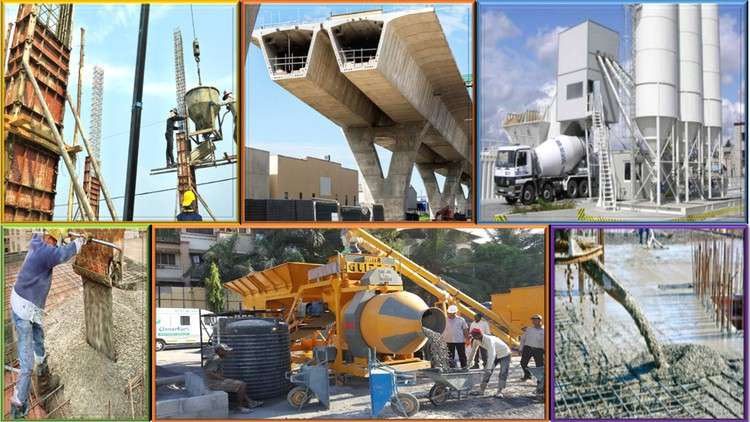
Master l Concrete l Concrete Technology l Reinforced concrete l Concrete Mix Design l Cement l Concrete design l Civil
What you will learn
Cement & Its Types
Test to be conducted on Cement – Field Test + Lab Test
Manufacturing of Cement – Ingredients , Function & Properties of Cement
Admixtures- Chemical & Mineral
Workabiliy , Segregation & Bleeding
Production of Concrete – Batching to Finishing !
Description
Syllabus of the Course
- Module-1 Concrete Ingredients Cement
Concrete Ingredients Cement –
Cement manufacturing process, steps to reduce carbon footprint, chemical composition and their importance, hydration of cement, types of cement. Testing of cement. Fine aggregate: Functions, requirement, Alternatives to River sand, M-sand introduction and manufacturing. Coarse aggregate: Importance of size, shape and texture. Grading and blending of aggregate. Testing on aggregate, requirement. Recycled aggregates Water – qualities of water. Chemical admixtures – plasticize-rs, accelerators, retarders and air entertaining agents. Mineral admixtures – Pozzolanic and cementitious materials, Fly ash, GGBS, silica fumes, Meta kaolin and rice husk-ash.
2. Module-2 Fresh Concrete Workability
Fresh Concrete Workability-
factors affecting work ability. Measurement of work ability–slump, Compaction factor and Vee-Bee Consistometer tests, flow tests. Segregation and bleeding. Process of manufacturing of concrete- Batching, Mixing, Transporting, Placing and Compaction. Curing – Methods of curing – Water curing, membrane curing, steam curing, accelerated curing, self- curing. Good and Bad practices of making and using fresh concrete and Effect of heat of hydration during mass concreting at project sites.
3. Module-3 Concrete Mix Proportioning
Concrete Mix Proportioning
Concept of Mix Design with and without admixtures, variables in proportioning and Exposure conditions, Selection criteria of ingredients used for mix design, Procedure of mix proportioning. Numerical Examples of Mix Proportioning using IS-10262:2019.
Concrete Technology
Concrete is a construction material composed of cement, fine aggregates (sand) and coarse aggregates mixed with water which hardens with time. Portland cement is the commonly used type of cement for production of concrete. Concrete technology deals with study of properties of concrete and its practical applications.
The main items we’ll focus on in this course are:
- Cement – Types & Roles of Different Ingredients
- Manufacturing of Cement – Dry & Wet Process
- The influence of admixtures and aggregates
- Properties of fresh and hardened concrete
- Work ability, settlement, bleeding and Segregation
- Production of Concrete
Content